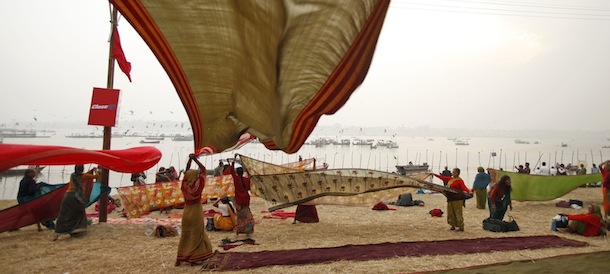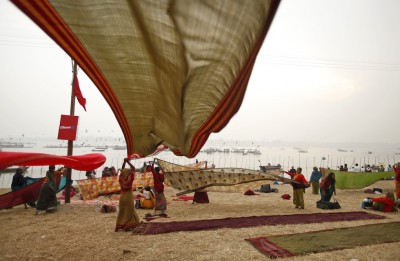I sari del Kumbh Mela
Tra le foto più belle dell'affollatissima festa induista ci sono lunghi panni colorati ad asciugare al sole

altre
foto
Il 14 gennaio è iniziato ad Allahbad, nello stato indiano dell’Uttar Pradesh, il Kumbh Mela, una festa induista considerata il più grande raduno di persone al mondo. Si prevede che vi parteciperanno 80 milioni di persone, provenienti da tutta l’India e da altri paesi del mondo: molte, arrivando da lontano, si sono accampate in tendoni lungo i fiumi Gange e Yamuna allestiti per l’occasione. Tra le attività quotidiane a cui si assiste più frequentemente c’è il lavaggio dei sari e di altri panni dai colori accesi e variegati nei fiumi, che vengono poi stesi ad asciugare al sole dalle donne, creando un effetto piuttosto suggestivo.
Il Kumbh Mela è una festa induista che si festeggia ogni dodici anni e prevede che i fedeli si immergano nella Triveni Sangam, la confluenza tra i fiumi Gange, Yamuna e il Saraswati, fiume sacro e invisibile: in questo modo – credono – i loro peccati verranno cancellati. La festa dura 55 giorni e quest’anno terminerà il 10 marzo.



















